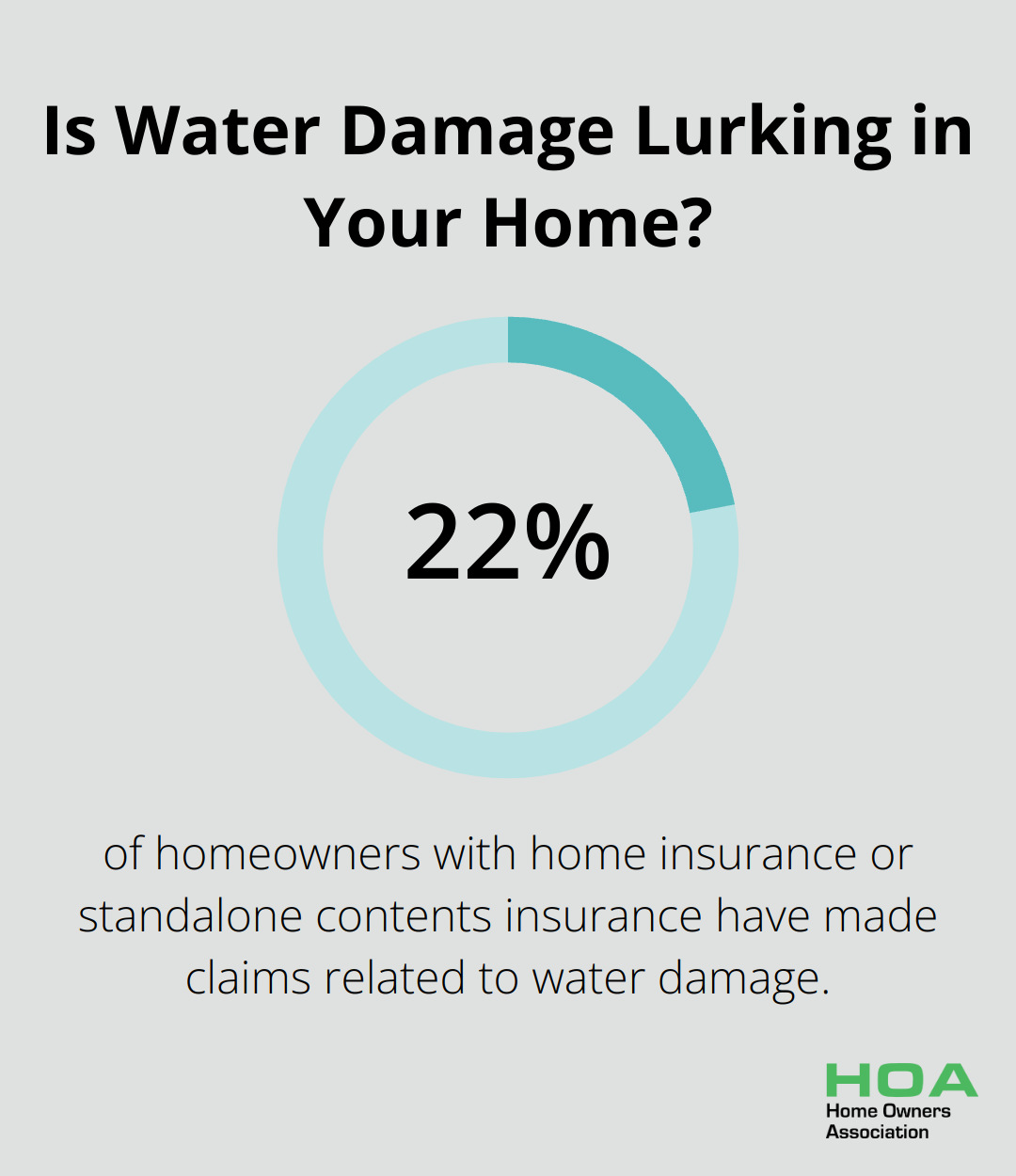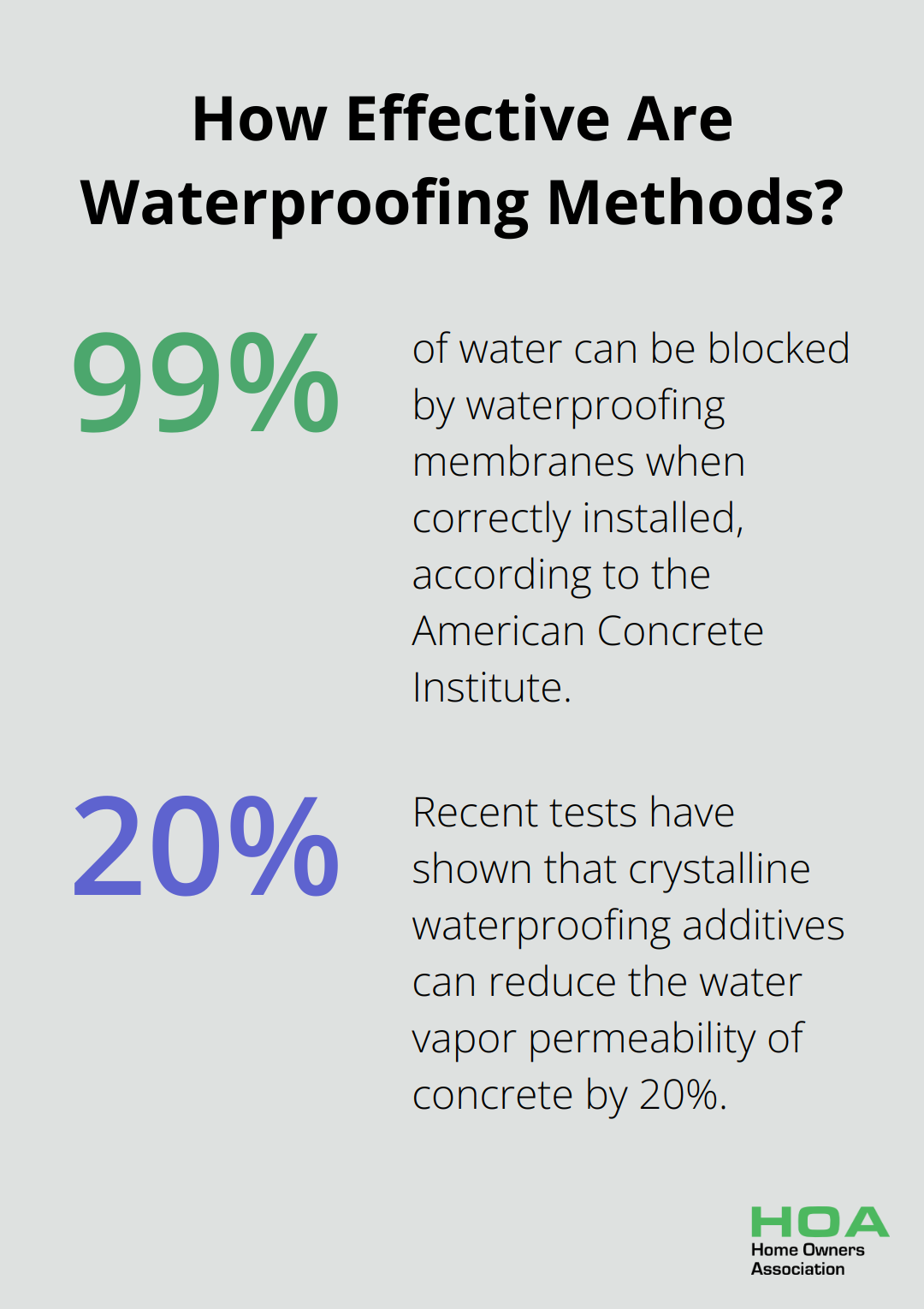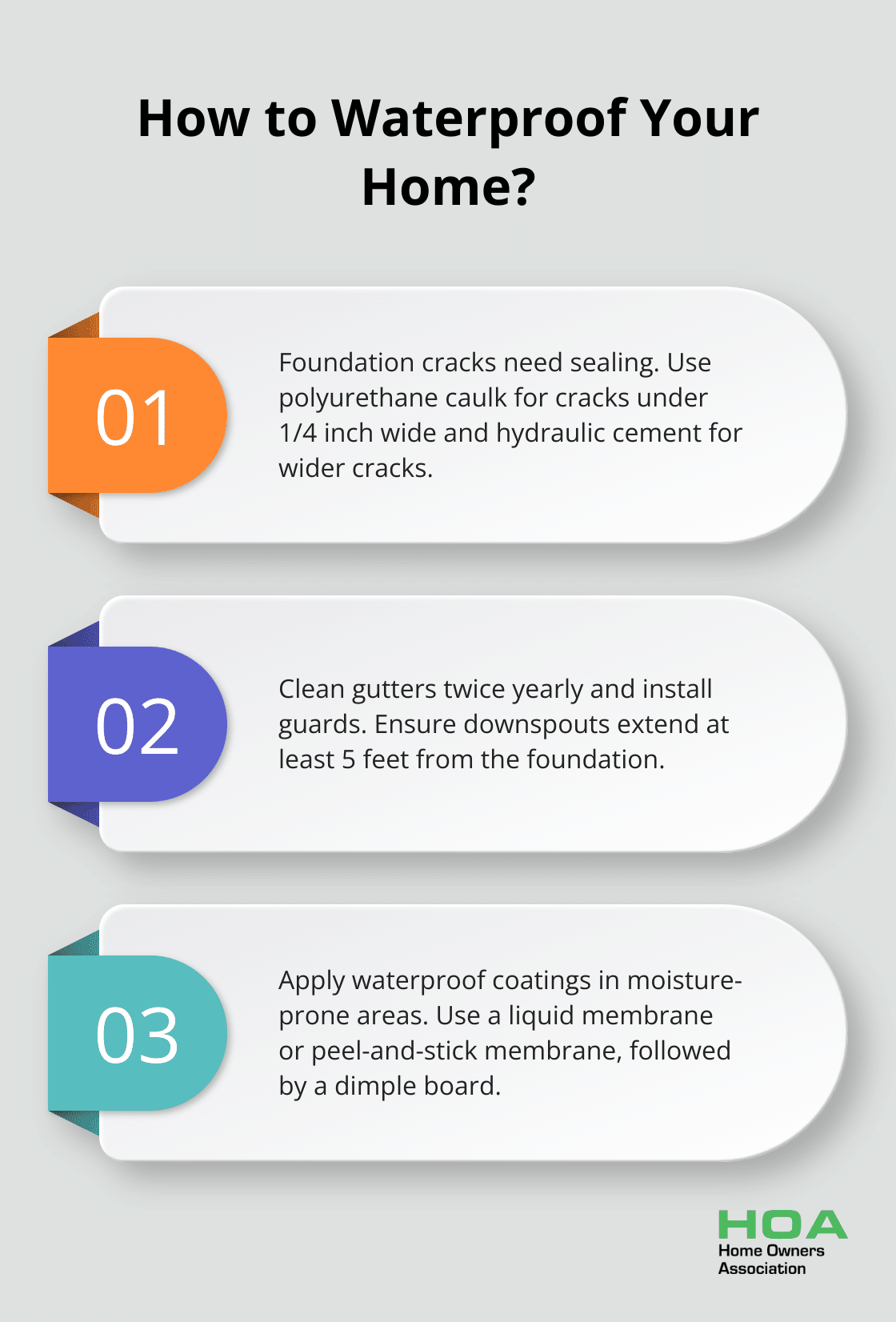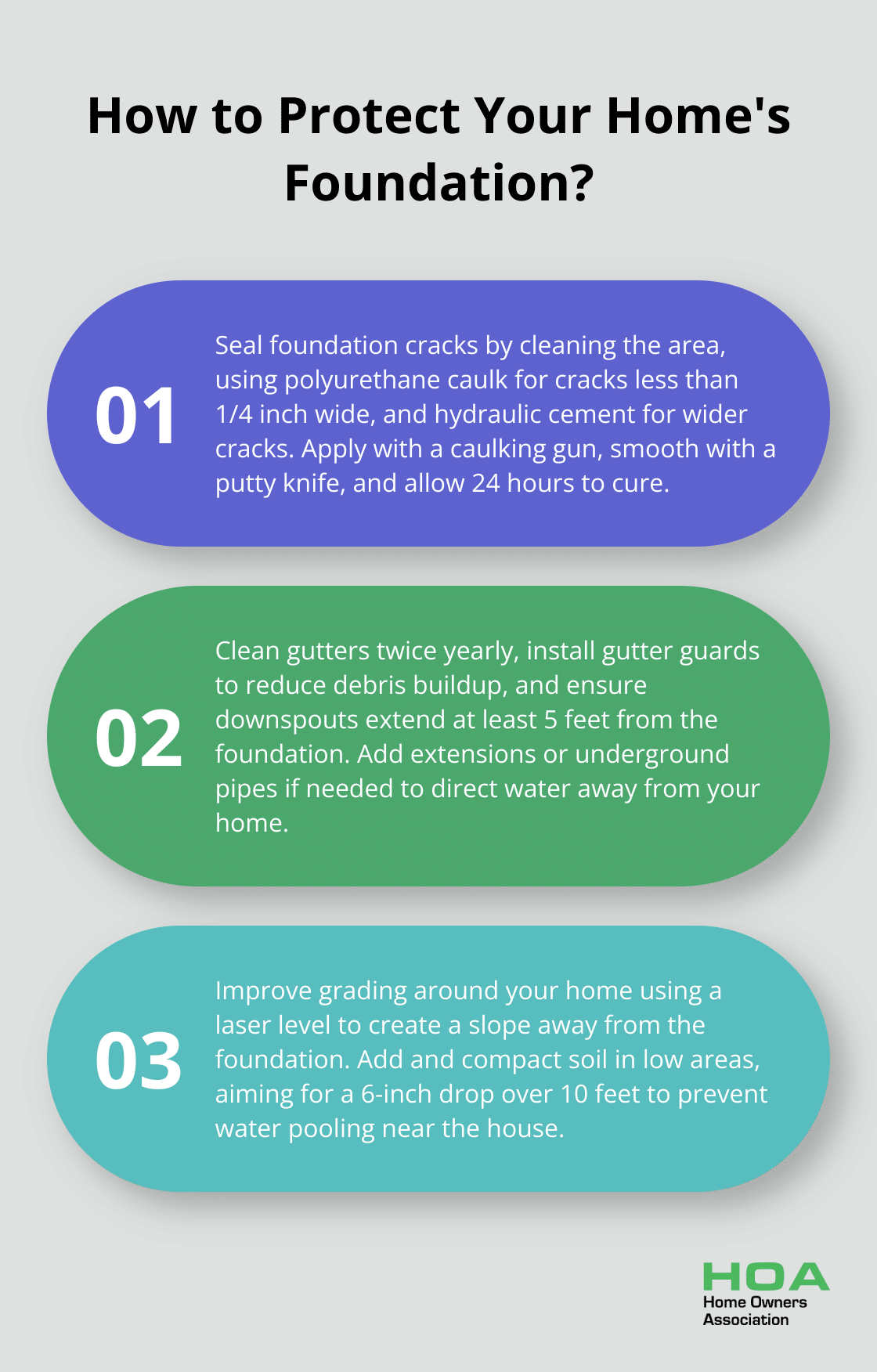
At Home Owners Association, we understand the critical importance of protecting your property from water damage. Water infiltration can lead to costly repairs and compromise the structural integrity of your home.
In this guide, we’ll share essential home waterproofing tips to help you safeguard your investment. From identifying vulnerable areas to implementing effective waterproofing techniques, we’ll equip you with the knowledge to keep your home dry and secure.
What is Home Waterproofing?
Definition and Purpose
Home waterproofing is the process of protecting your property from water damage. It involves the application of specialized materials and techniques to create barriers that prevent moisture from entering your home. The primary goal is to keep water out of vulnerable areas, thus preserving the structural integrity of your house.
The Importance of Waterproofing
Water damage poses a significant threat to homes across Australia. According to a survey by Budget Direct, 22% of homeowners with home insurance or standalone contents insurance have made claims. This statistic underscores the prevalence and potential cost of water-related issues.

Effective waterproofing serves multiple purposes:
- It protects your home’s structural integrity
- It prevents costly repairs
- It maintains your property’s value
Waterproofing is not just about avoiding immediate damage; it’s an investment in long-term protection and peace of mind for homeowners.
Vulnerable Areas in Your Home
Certain parts of your house are more susceptible to water infiltration than others. Here are some key areas to focus on:
- Basements: Due to their below-ground location, basements are particularly prone to moisture problems.
- Roofs: Poor maintenance can lead to leaks and extensive damage.
- Windows and doors: These are common entry points for water, especially during heavy rains or storms.
- Foundations: Cracks can allow water to seep in, potentially causing severe structural issues over time.
- Exterior walls: Porous materials like brick or concrete can absorb moisture if not properly sealed.
Identifying Water Infiltration
Early leak detection is essential for preventing structural damage to your home. Watch for these telltale signs:
- Discoloration or water stains on walls, ceilings, or floors
- Peeling paint or wallpaper
- Musty odors (especially in basements or crawl spaces)
- Warped or buckled flooring
- Visible mold growth
- Increased humidity levels inside your home
If you notice any of these signs, take immediate action. Ignoring water infiltration can lead to more severe problems, including structural damage and health hazards from mold growth.
Professional Assessment and Solutions
While some waterproofing tasks can be DIY projects, a professional assessment can provide valuable insights into your home’s specific vulnerabilities. Experts can identify less obvious problem areas and recommend the most effective solutions for your situation.
Many homeowners’ associations offer exclusive trade pricing on waterproofing materials, making it more affordable to implement comprehensive waterproofing strategies. This benefit can lead to significant savings on both materials and potential future repairs.
Understanding the basics of home waterproofing empowers you to take proactive measures in protecting your property. In the next section, we’ll explore effective waterproofing techniques that you can apply to keep your home dry and secure.
How to Waterproof Your Home Effectively
Exterior Waterproofing: Your First Line of Defense
Exterior waterproofing prevents water from entering your home. Apply a waterproof membrane to your foundation walls. According to the American Concrete Institute, waterproofing membranes can block up to 99% of water when correctly installed. This barrier should extend from the footing to about 12 inches above ground level. For optimal protection, use a dimpled membrane, which creates an air gap between the soil and foundation, allowing water to drain away easily.

Focus on your roof. Replace any damaged or missing shingles promptly. Apply a waterproof sealant to areas prone to leaks (such as around chimneys and vents). Clean and maintain your gutters regularly – clogged gutters can cause water to overflow and seep into your home’s foundation.
Interior Waterproofing: Tackling Moisture from Within
Interior waterproofing provides an additional layer of protection. Apply a waterproof sealant to your basement walls and floors. This creates a barrier that prevents moisture from seeping through concrete and masonry.
For severe cases, install a French drain system. Create a trench along the perimeter of your basement, install a perforated pipe, and cover it with gravel. The pipe collects water and directs it to a sump pump, which then expels it away from your home.
Vapor barriers are another important element of interior waterproofing. Install these plastic sheets on basement walls and crawl space floors to prevent moisture from entering living spaces. The Building Code of Australia states that vapor barriers are essential for controlling moisture in buildings and reducing the risk of mold growth.
The Important Role of Proper Drainage
Even the best waterproofing methods can fail without proper drainage. Ensure that the ground around your home slopes away from the foundation by at least 6 inches over 10 feet. This prevents water from pooling near your home’s base.
Install French drains in areas where water tends to collect in your yard. These underground pipes redirect water away from problem areas, keeping your property dry.
Don’t overlook your downspouts. They should extend at least 5 feet away from your home to prevent water from saturating the soil near your foundation. Consider installing underground downspout extensions for a more permanent and aesthetically pleasing solution.
Advanced Waterproofing Technologies
Modern waterproofing solutions offer innovative ways to protect your home. Crystalline waterproofing additives can be mixed into concrete during construction, creating a waterproof barrier throughout the entire structure. Recent tests have shown that these admixtures can reduce the water vapor permeability of concrete by 16-20%. Elastomeric coatings provide a flexible, waterproof membrane that can bridge small cracks and move with the building.
Smart moisture detection systems alert homeowners to potential water intrusion issues before they escalate. These systems use sensors placed in vulnerable areas to monitor moisture levels and send alerts to your smartphone if abnormal levels are detected.
Professional Assessment and Solutions
While some waterproofing tasks can be DIY projects, a professional assessment provides valuable insights into your home’s specific vulnerabilities. Experts identify less obvious problem areas and recommend the most effective solutions for your situation.
Many homeowners’ associations offer exclusive trade pricing on waterproofing materials, making it more affordable to implement comprehensive waterproofing strategies. This benefit can lead to significant savings on both materials and potential future repairs.
The next chapter will explore DIY waterproofing tips that homeowners can implement to further protect their properties from water damage.
DIY Waterproofing Tips for Your Home
Seal Foundation Cracks
Inspect your foundation for cracks, including hairline ones. Clean the area thoroughly and allow it to dry completely. For cracks less than 1/4 inch wide, use a polyurethane caulk designed for concrete. Wider cracks require hydraulic cement that expands as it dries.

Apply the sealant with a caulking gun, ensuring it penetrates deep into the crack. Smooth it out with a putty knife for a neat finish. Allow it to cure for at least 24 hours before exposing it to moisture.
Maintain Gutters Effectively
Clean gutters at least twice a year (more if you have overhanging trees). Use a sturdy ladder and wear gloves to remove debris. Flush the gutters with water to check for proper drainage and leaks.
Install gutter guards to reduce debris buildup. Mesh screens or snap-on covers can significantly reduce maintenance time. Ensure downspouts extend at least 5 feet away from your foundation. If they’re too short, add extensions or underground pipes to direct water away from your home.
Apply Waterproof Coatings
For areas prone to moisture, waterproofing consists of roll-on/spray-on liquid membrane (or a peel-and-stick membrane), and a dimple board to prevent hydrostatic pressure from accumulating. Clean the surface thoroughly and repair any visible damage before application. Use a roller or brush to apply the coating evenly, following the manufacturer’s instructions for thickness and drying time. Most coatings require at least two layers for optimal protection.
Improve Grading Around Your Home
Proper grading is essential for effective water management. Take a laser level and hold it at the highest point of your foundation the grade can be up against it and point it towards the area you want the water to flow. This helps prevent water from pooling near your home’s base.
Add soil to low areas around your foundation to create the proper slope. Compact the soil well to prevent settling. Consider installing a French drain in areas where water tends to collect in your yard.
Waterproof Windows and Doors
Windows and doors are common entry points for water. Inspect the caulking around these openings annually and replace it if it’s cracked or peeling. Use a high-quality, exterior-grade caulk for this task.
For added protection, apply a water-repellent sealant to the exterior frames of windows and doors. This creates an additional barrier against moisture infiltration. Don’t forget to check and replace weatherstripping as needed to prevent water from seeping in during heavy rains.
Final Thoughts
Home waterproofing tips protect your property’s structural integrity and value. Proper waterproofing prevents costly repairs, enhances energy efficiency, and creates a healthier living environment. A well-waterproofed home maintains its appeal in the real estate market, potentially increasing your property’s worth by up to 10%.

Regular inspections and maintenance ensure your waterproofing measures remain effective over time. We recommend thorough checks at least twice a year, particularly before and after the rainy season. This proactive approach allows you to identify and address potential issues before they escalate into major problems.
Home Owners Association supports Melbourne homeowners in their efforts to protect and enhance their properties. Our members benefit from exclusive trade pricing on waterproofing materials and expert advice tailored to local conditions (subject to availability). Take action today to ensure your home remains dry, secure, and valuable for years to come.





